Quick links
About this guide
The general capabilities are embedded within specific learning activities and can be identified with the following icons:
The general capabilities are embedded within specific learning activities and can be identified with the following icons:
Synopsis
After Rella is offered a recording contract with Prince Charming Records, her sisters embark on a magical journey that sees them reclaim their rightful place in the spotlight.
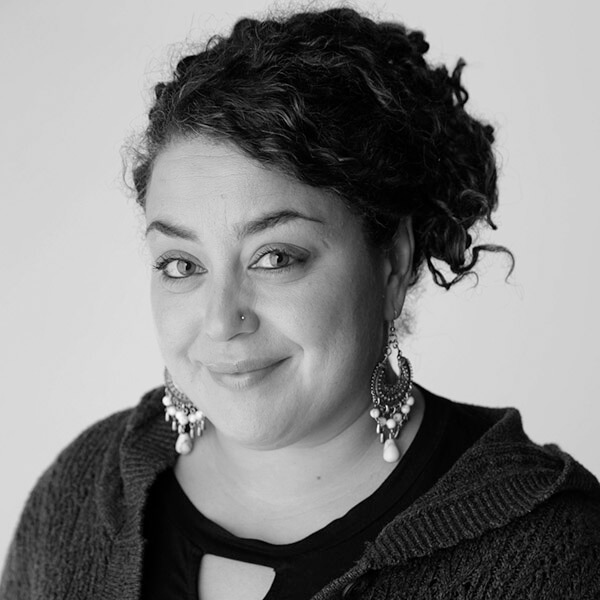
Co-Creator, Director
Sasha has worked in the performing arts industry for over 25 years as a producer, maker and director. Positions include Artistic Director of D’Faces of Youth Arts, Kurrruru Youth Performing Arts, Associate Artistic Director of the Come Out Festival, Creative Producer of Adelaide Fringe (2009 – 2014), co-program director for the Royal Croquet Club (2015 – 2018), co-director of Stirling Fringe (2017- 2019) and Producer for Briefs Factory and Hot Brown Honey (2014 – 2015).
Sasha has worked extensively with Vanuatu’s Wan Smolbag Theatre and was Executive Producer of the Opening and Closing Ceremonies for the mini–Pacific Games (2017). In 2021 she was appointed as Associate Director of Windmill Theatre Company.
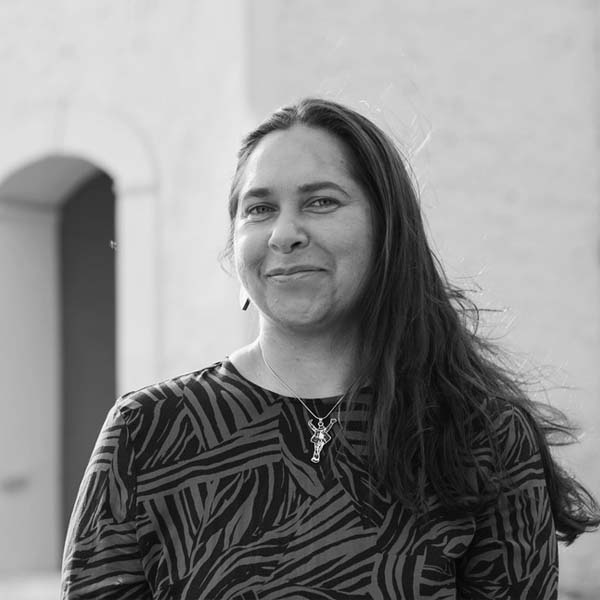
Co-Creator, Writer
Tracey is a playwright and screenwriter who draws inspiration from her Wotjobaluk and Ngarrindjeri culture. She has worked with Ilbijerri Theatre Company, Black Hole Theatre and Windmill Theatre Company.
Tracey has worked broadly across the Australian screen industry as a writer and director. Her credits include: Endangered, Abalone, Man Real and Elders. She directed Steven Oliver’s web series A Chance Affair and has written for TV on The Warriors. Her works have screened nationally and internationally.
One of her career highlights is working with her co-collaborator Desiree Cross and Koorie students from Dimboola Primary School on Teacher’s Pet. This film won Best Primary School Production and was an ATOM award finalist. She is currently working back in the theatre space on some exciting projects.

Co-Creator, Choreographer, Performer
Fez is well known for creating accessible, ground-breaking, physically dynamic and contemporary performance that infuses his Pacific bloodline, political bite, gender juggling, visual spectacle and tongue-in-cheek.
Fez has worked broadly as an educator, choreographer, creative director, performer, and mischief maker as the Co-founder and Creative Director of Briefs Factory International, an all-male circus, burlesque performance company that has toured the globe.
He has also independently produced and programmed work for Brisbane Festival, Adelaide Fringe Festival as well as the Brisbane Powerhouse.
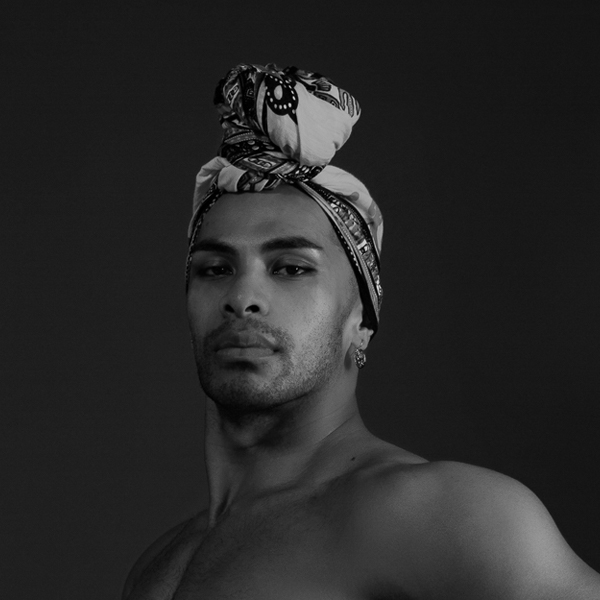
Co-Creator, Choreographer, Performer
Thomas Fonua an artist of Pacific decent with an established career as a dancer, choreographer and emerging leader. Thomas has worked for companies such as Black Grace (NZ), Australian Dance Theatre, Red Sky Performance (Canada), Briefs Factory and has been touring internationally from the age of 16.
Thomas’ alterego Kween Kong, is the Reigning Dragnation Australia Winner. With a strong focus to inspire, challenge and nurture our community with his loved based leadership style.
Thomas is the recipient of The NZ Prime Minster’s Award for Arts and Creativity (2015), Out For Australia’s Emerging Leader (2019) and has recently been nominated for the Dora Award For Outstanding Choreography in Canada.

Performer, Co-Composer
Carla Lippis has recently returned home to Adelaide after 4 years in London’s West End, where she worked as the principal singer at the historic Cafe de Paris, and as the host of notorious nightclub The Box.
Her international touring has included concerts with Calexico, Kiss, Mötley Crüe and Jon Spencer Blues Explosion, and she has performed with La Soiree, Club Cumming and Johnny Woo’s All-Star Brexit Cabaret among others.
Her Adelaide Cabaret Festival appearances include The 27 Club, Southern Belles, and her own Cast A Dark Shadow.
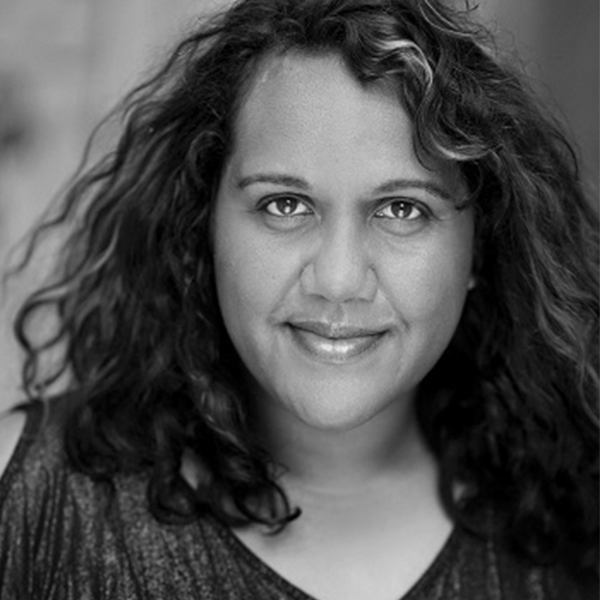
Performer
Elaine Crombie is a Helpmann Award-winning actor, singer, writer and musician working broadly across theatre, television and film.
She has performed with Belvoir, Sydney Theatre Company, Queensland Theatre, Malthouse Theatre, State Theatre Company South Australia and Bangarra among many others. Elaine’s screen credits include Top End Wedding, Rosehaven, Top of the Lake and Black Comedy.

Designer
Meg Wilson is an Adelaide-based interdisciplinary artist and designer whose practice has spanned installation, performance and set, lighting, curation and costume design. Meg has worked with State Theatre Company South Australia, Theatre Republic, FELT Space, Ace Open, Vitalstatistix, Foul Play, Patch Theatre Company, The Rabble and Restless Dance Theatre among many others.
Meg’s durational performance work SQUASH has toured nationally and was awarded the 2019 Green Room Award for Contemporary and Experimental Performance (Innovation in Durational Performance.

Co-Composer, Sound Designer
Duncan has been an active creative in Adelaide for the past 15 years working in the music and film industries.
From early days writing and performing in concept rock band Mr Wednesday to more recent endeavours working in foley and sound effects/design for film and television. In 2019 Duncan received an Australian Screen Sound Guild award for Best Sound Editing on the SciFi Netflix film I Am Mother. He is also currently writing and performing with Adelaide singer songwriter Carla Lippis.
Most recent film credits include The Furnace, Mortal Kombat, Mr Corman, Kate and Westworld.

Lighting and AV Designer
Chris is a lighting and video designer from Adelaide, working across theatre, dance, and other live events in Australia and internationally.
Chris has worked with renowned arts organisations including State Theatre Company of South Australia, Theatre Republic, Is This Yours, Australian Dance Theatre, Brink Productions, Restless Dance Theatre, Slingsby Theatre Company, Force Majure, Windmill Theatre Company and Vitalstatistix.
Chris recently worked on the inaugural Illuminate Adelaide Festival’s Light Cycles in the Adelaide Botanic Gardens crafted by the world-leading studio, Moment Factory.
Other recent credits include Carla Lippis’ Mondo Psycho for WOMAD 2022, Theatre Republic’s How Not To Make It In America and Windmill Theatre Company’s Creation Creation.
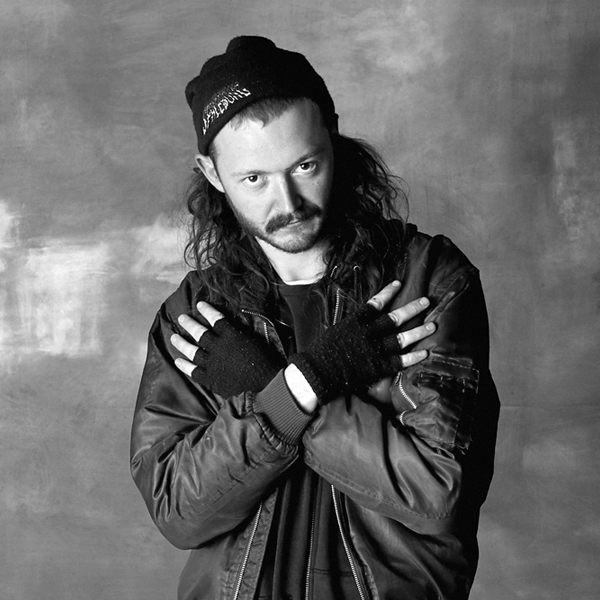
AV Content Designer
Liam Somerville is a video artist and cinematographer living and working on Kaurna Land. He is the co-founder of CAPITAL WASTE PICTURES, a production company creating installations and films that focus on the interaction between distortions of reality and the moving image. Liam has worked broadly across film and television, completing residencies in Adelaide and Denver. He was the co-director of VIDEO NASTY: The Making of Ribspreader and has had works screened at Adelaide Film Festival, RCC, Womadelaide, Adelaide Festival Centre, Otterbox Digital Dome at Fort Collins Museum of Discovery and Gates Planetarium at Denver Museum of Science & Nature among many others.

AV Content Designer
As a motion graphics designer, Greg has been working in the industry for over a decade with clients from all over the world. Developing social media content for a broad range of leading brands from network TV to big sporting events he has a passion for helping brands and clients get their message out to the world.
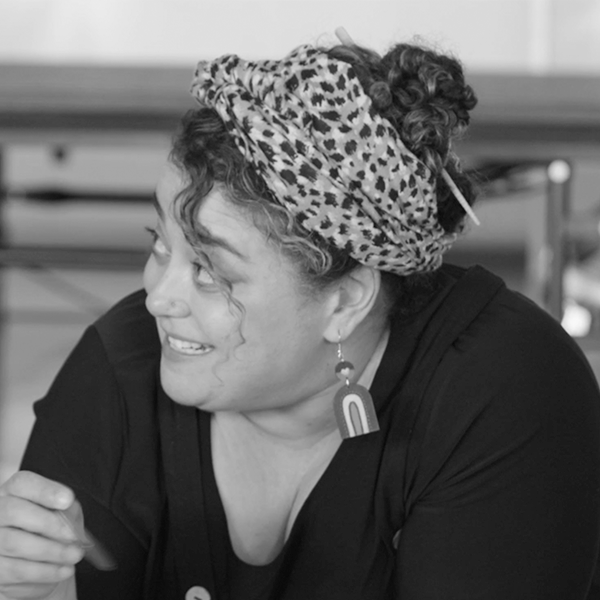
Sasha Zahra introduces the team behind Rella and lets us know about all of the marvellous mischief she and her awesome collaborators are making in the show.
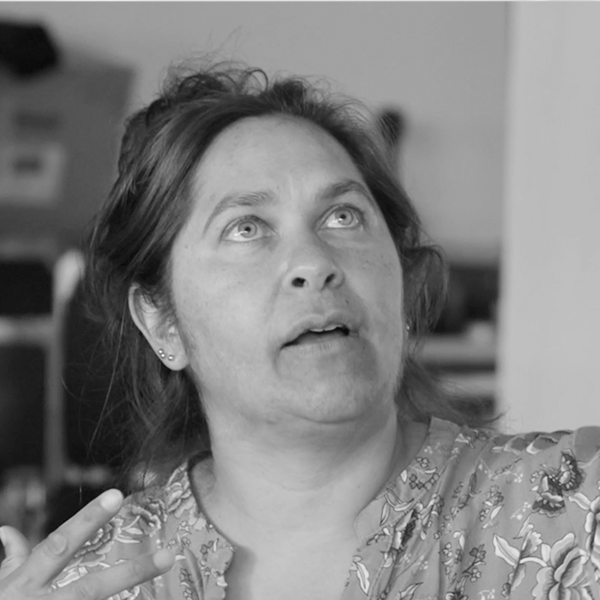
Tracey Rigney talks about her inspiration for Rella, the process of smashing the glass slipper and how she has gone about reframing the moral compass of the classic fairytale.
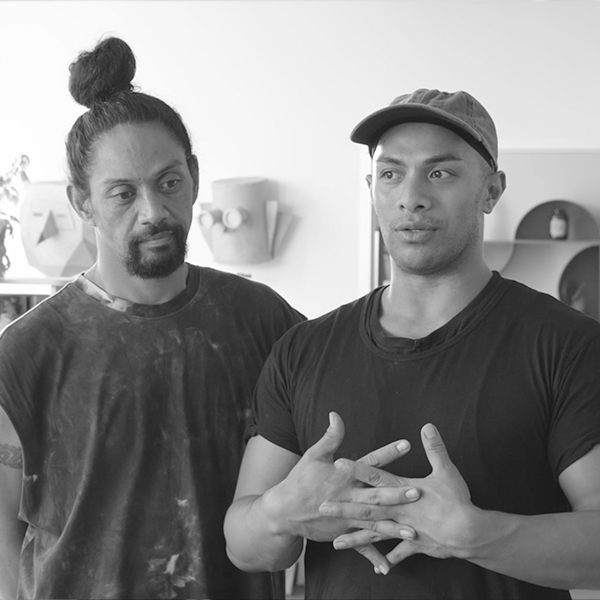
Thomas Fonua and Fez Faanana take a break from the rehearsal room to tell us about taking on the biggest challenge of their career: being ugly. Which is impossible for two people as objectively beautiful as them, obviously.
A long time coming...
Sasha and Fez have been creative collaborators for over a decade. Rella is the first time they've ever made a theatre show together.
Family
The strong ties of family are at the core of Rella, from the moment Rella is taken in by Marlene and raised as her own, to Afa and Sika fighting to free Rella from the confines of Prince Charming Record Company. The family bond between these characters ultimately proves greater than the sum of its parts and provides a place where each characters feels they can be their true self. Australian First Nations and Samoan cultural connections to family are also evident throughout the play, as it subtly explores abandonment, forced separation and transformation, the indestructible connection of spirit and enduring presence of the past.
Identity
Each character experiences a transformation of identity throughout the play. With a new identity imposed on her by Prince Charming Record Company, Rella must choose between living with an artificial or authentic version of herself. Having lost Rella, Afa and Sika must also find their own voices and identity as they transform into their own ‘Samoan Goddesses’. Marlene’s identity has been shaped by significant personal and cultural loss throughout her life. Consequently, she must face her grief to find a way forward for herself and her daughters.
Dreams/reality
The road to dreams becoming reality is never easy and is often paved with crossroads and detours that provide invaluable life lessons. On the path to transforming their hopes into reality, Rella, Afa and Sika discover that dreams are worth fighting for and what they were searching for was in front of them the whole time.
Beauty
Beauty is at the centre of the classic Cinderella story and most traditional fairytales. Through the journey of Afa and Sika (and their smearing as ‘ugly’ by the team at the ‘Is This Talent’? TV talent contest), Rella asks audiences to look at popular or mainstream beauty standards and how they interact with non-western cultures and conceptions of gender.
Welcome to Camp Windmill
A digital campsite dedicated to the art of the pose
When we created Rella, we found ourselves with a work that used the language of camp to explore beauty, fame and gender in a thrilling and fun way. Camp Windmill takes this a step further, giving our wonderful young audience with the language to better understand the art of artifice by introducing them to some of Australia’s finest purveyors of camp.
Developed in collaboration with experience design firm Sandpit and hosted by drag artists Thomas Fonua and Fez Faanana, Camp Windmill features interviews with Paul Capsis, Chiara Gabrielli, Christine Johnston, Joel Bray, Stephen Nicolazzo, Glace Chase, Jonathon Oxlade and Windmill’s very own Rosemary Myers.
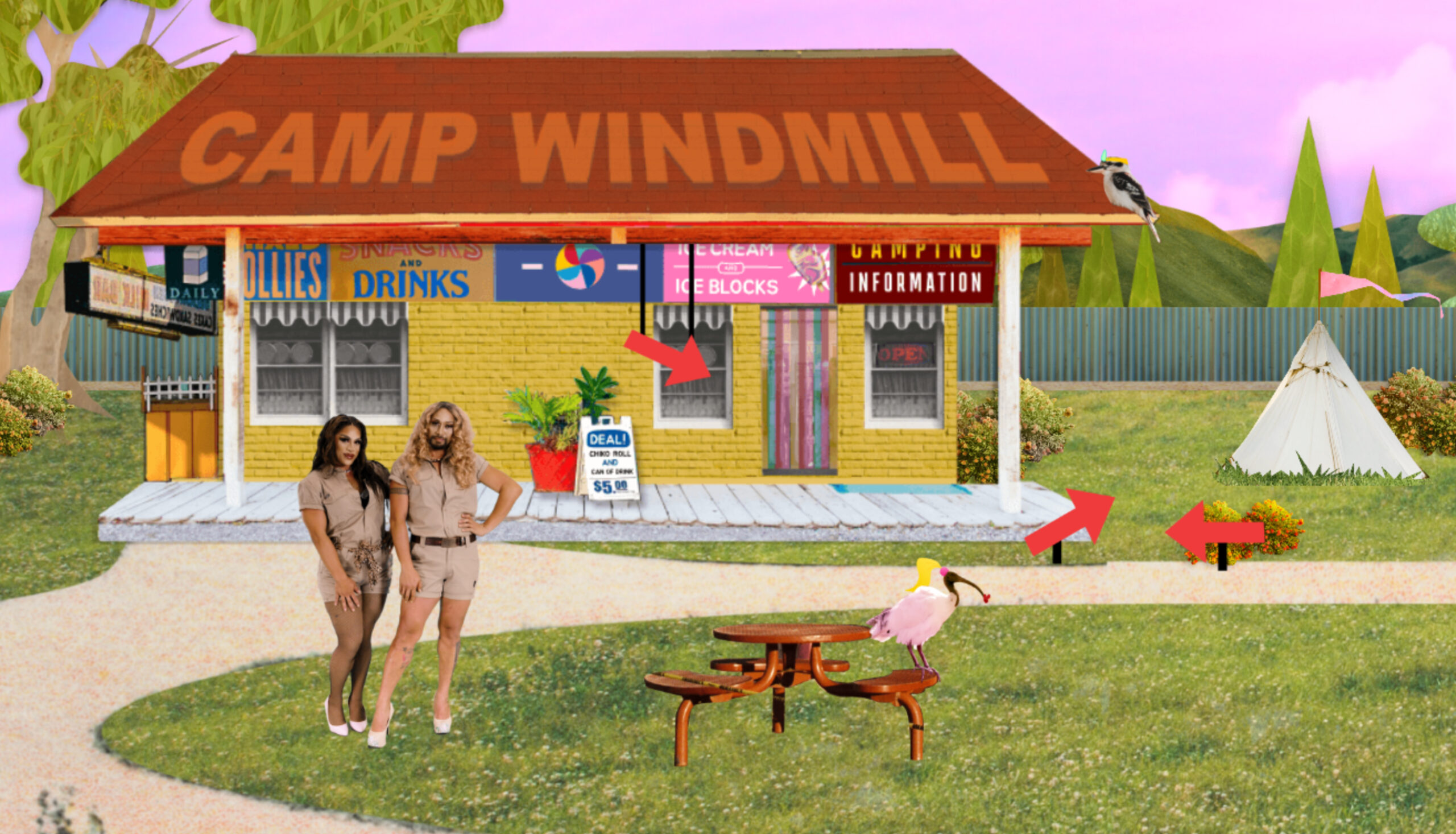
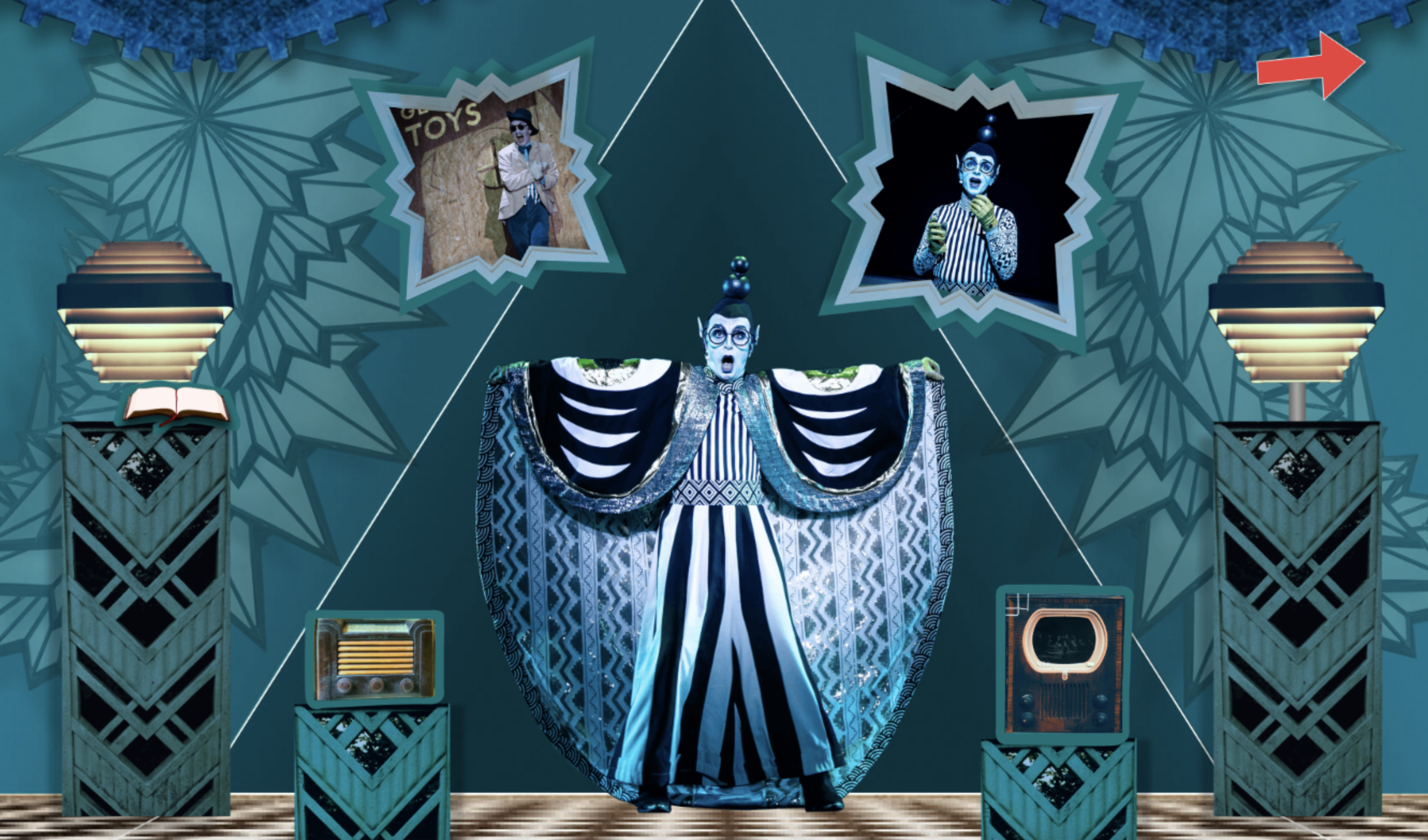
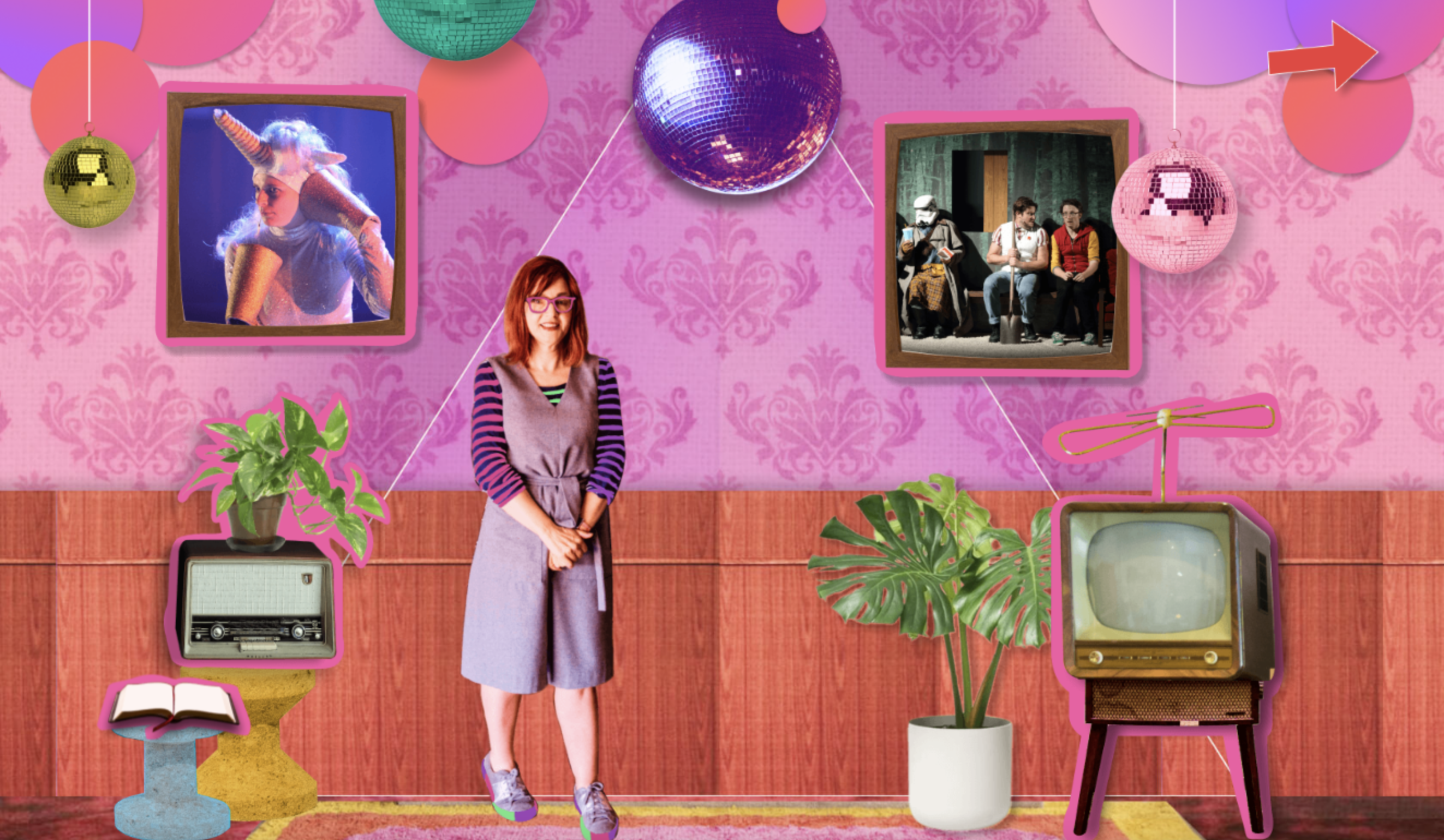
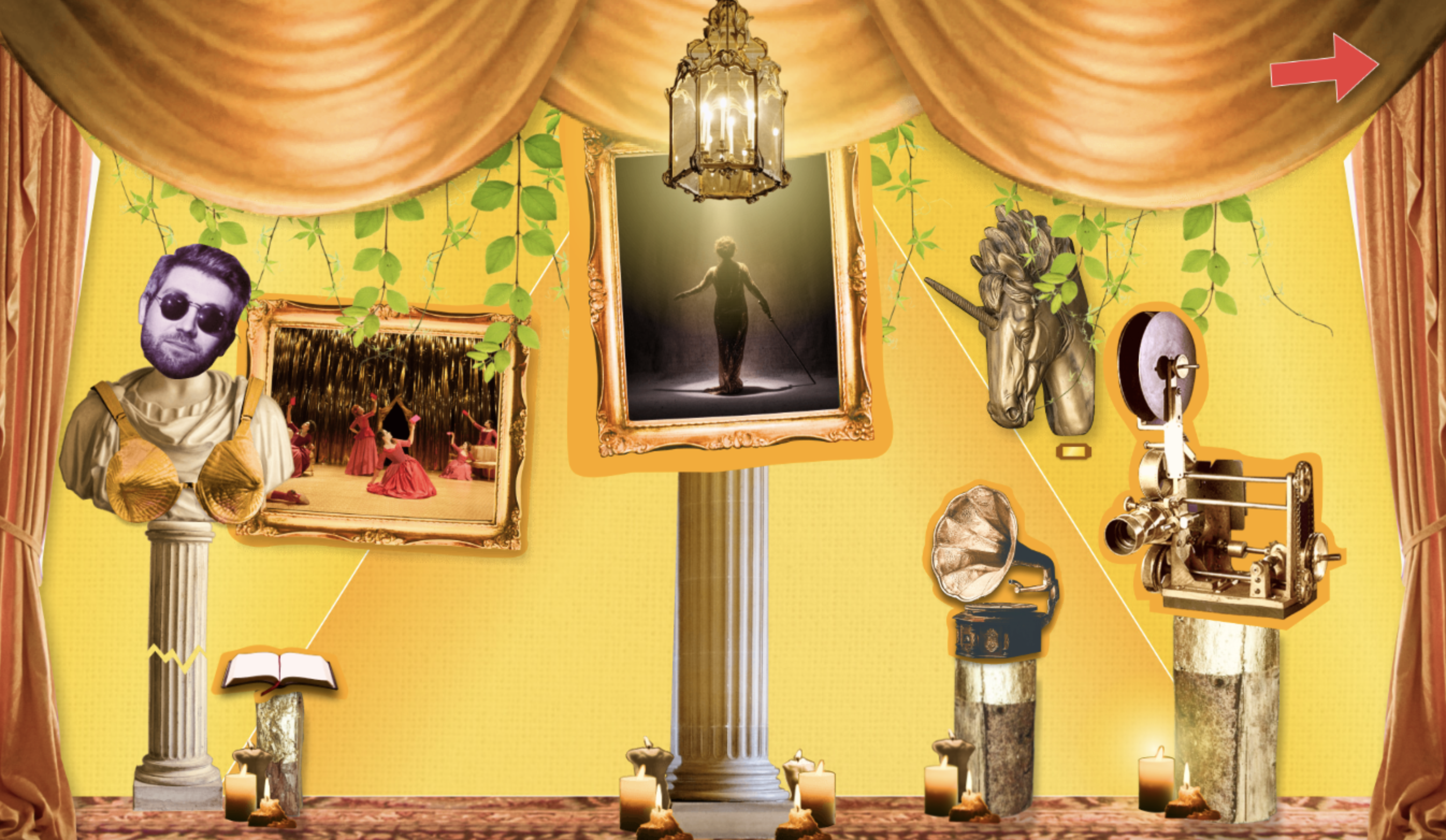
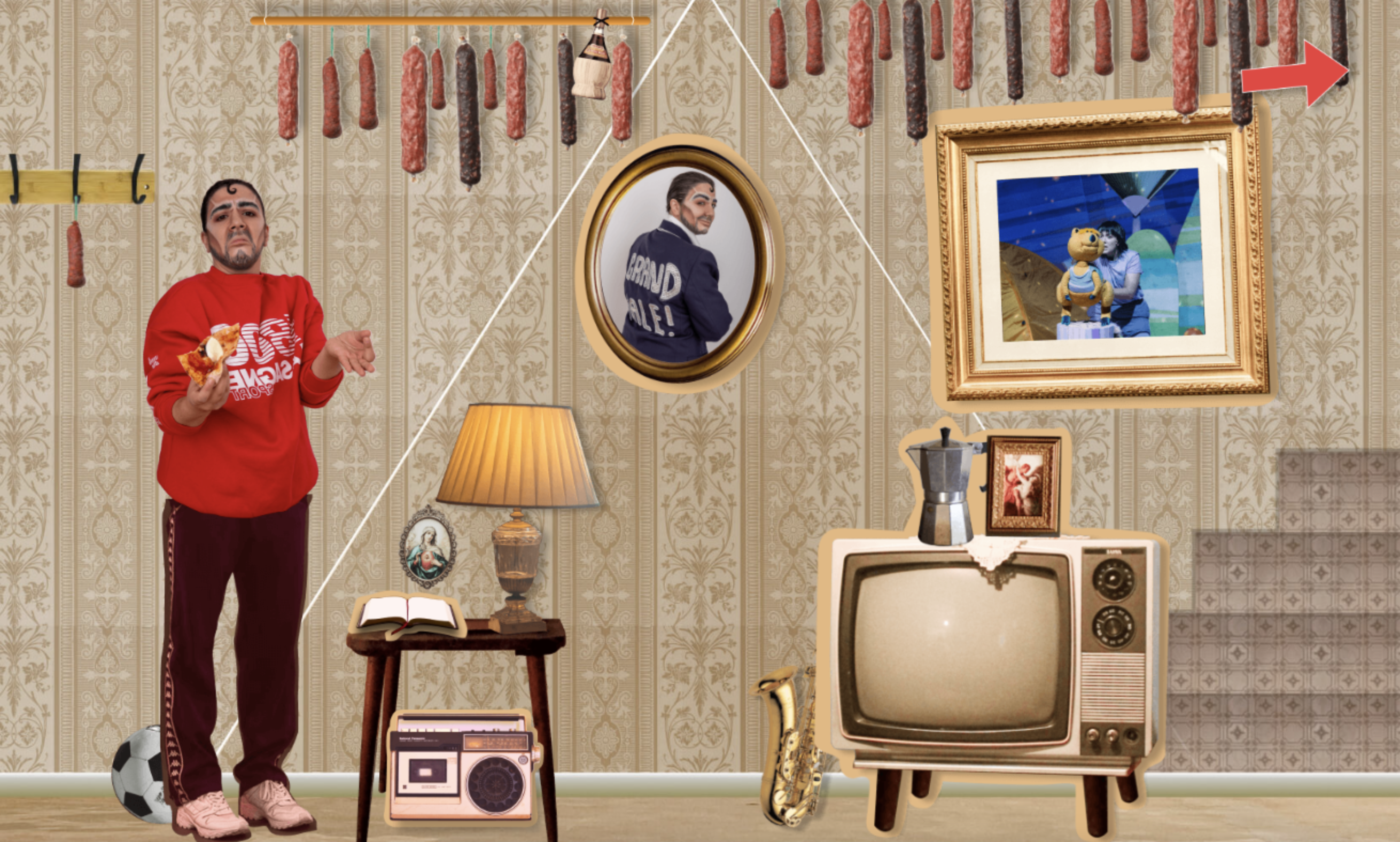
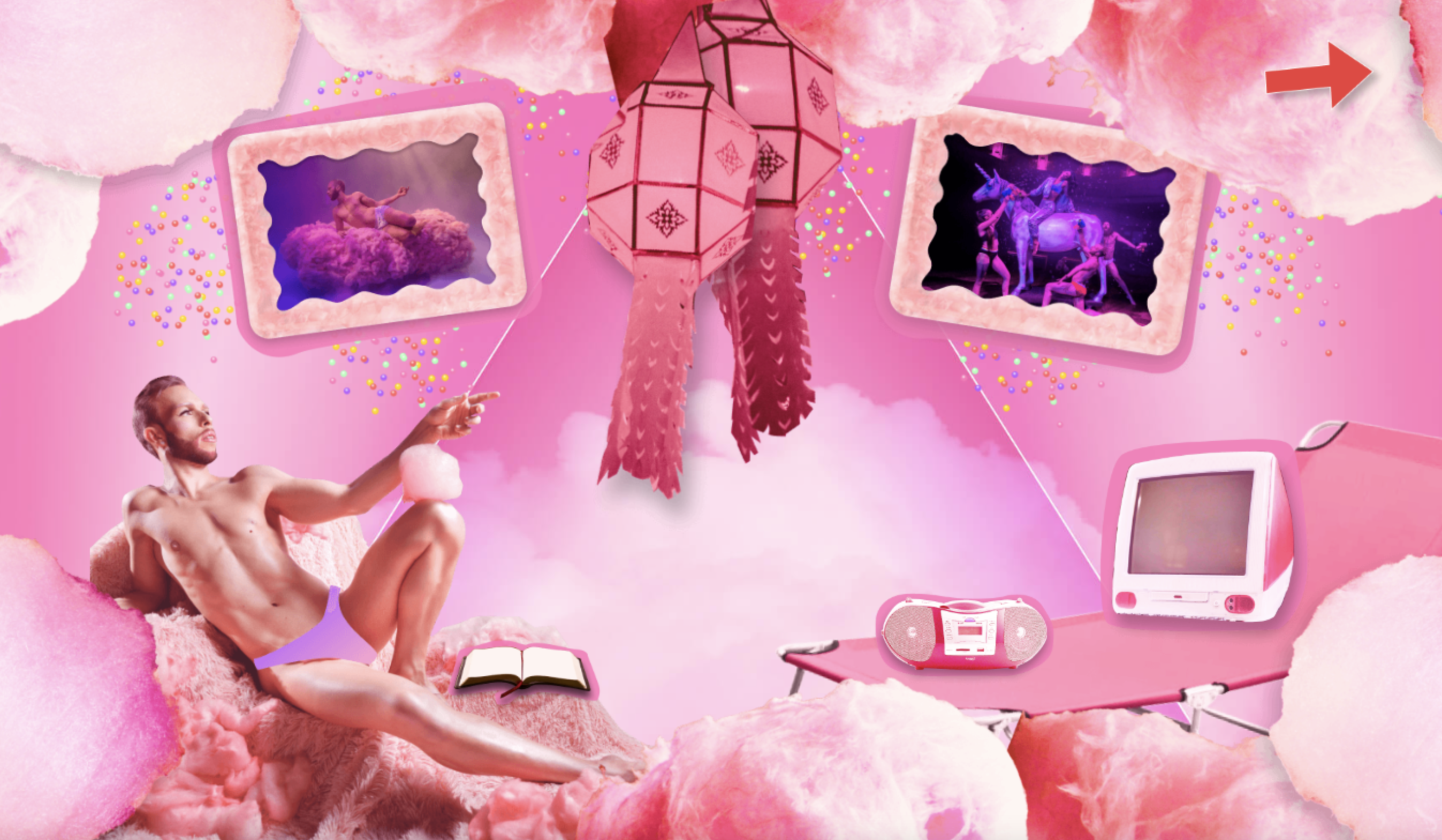
Q1. What cultural influences have inspired you as a contemporary artist?
The cultural influences that inspire me as a contemporary artist are quite broad. I’d like to think I’m inspired by my Wotjobaluk and Ngarrindjeri roots, but that’s only the beginning. I am heavily influenced by my upbringing in the 1980s and 1990s, as well as influenced by my family, friends and the environments I live in or visit. Be it country and/or city. What draws me to the city is watching people go about their lives. But I am bias when it comes to the natural environment – it truly is awe inspiring. I like to keep up to date with things going on in terms of popular culture and find social media a fascinating beast of a thing. Music is a massive part of my life and really helps me create. I actually write my scripts as I listen to music. And in addition to this I am a deeply spiritual person and find that this plays a huge role in my life personally and professionally.
Q2. How are these influences evident in ‘Rella’?
I think these influences are evident in Rella in a lot of ways. I get to funnel my First Nations perspective and voice through the character of Marlene. I get to tap into my idea of spirituality as I delve into the beauty of Samoan culture and spirituality. I also draw from life the notion of what family is in today’s society – quite a departure of what that notion was during my formative years. In Rella I think the thing that excites me also is the fact that it is a musical. Music is so inspiring for me and I am just so grateful that I can now say I’ve written for a musical. Especially since we as a team all agreed to incorporate music from the 1980s and 1990s. I feel Rella really is a love letter to the music and fashion of those decades. And I must admit – I always love me some drag queen action too! I really do feel privileged to help tell this unique story.
Q3. What impact do you want your work to have on your audience considering these cultural influences?
I hope the audiences find inspiration in my work just like I find inspiration from things that influence me in life. I hope they allow themselves to go on the journey with the characters. Venture into this Rella world and really enjoy their time there, learn something new there or see themselves reflected there. Art and storytelling have a vital role to play in our lives and can impact change for the greater good, be it through transformation, healing and empathy. And if the audiences watch this show and wonder to themselves if this creative life is something they might like to do – then I hope they have the courage to just do it. Because from my perspective – a creative life is a viable career option and it’s such a fulfilling existence.
This unit includes learning experiences and assessment linked to The Arts: Drama, Australian Curriculum across Years 7 and 8. Teachers can choose to use individual learning experiences to complement existing drama units or complete the entire unit of work with their students.
The learning experiences can provide a structure to view and explore Rella with your students. They will provide opportunity for students to explore the play resources independently as well as generate class discussion and sharing of interpretations of the play.
By the end of Year 8, students identify and analyse how the elements of drama are used, combined and manipulated in different styles. They apply this knowledge in drama they make and perform. They evaluate how they and others from different cultures, times and places communicate meaning and intent through drama.
Students collaborate to devise, interpret and perform drama. They manipulate the elements of drama, narrative and structure to control and communicate meaning. They apply different performance styles and conventions to convey status, relationships and intentions. They use performance skills to shape and focus theatrical effect for an audience.
Combine the elements of drama in devised and scripted drama to explore and develop issues, ideas and themes (ACADRM040).
Develop roles and characters consistent with situation, dramatic forms and performance styles to convey status, relationships and intentions(ACADRM041).
Plan, structure and rehearse drama, exploring ways to communicate and refine dramatic meaning for theatrical effect (ACADRM042).
Develop and refine expressive skills in voice and movement to communicate ideas and dramatic action in different performance styles and conventions, including contemporary Australian drama styles developed by Aboriginal and Torres Strait Islander dramatists (ACADRM043).
Perform devised and scripted drama maintaining commitment to role (ACADRM044).
Analyse how the elements of drama have been combined in devised and scripted drama to convey different forms, performance styles and dramatic meaning (ACADRR045).
Identify and connect specific features and purposes of drama from contemporary and past times to explore viewpoints and enrich their drama making, starting with drama in Australia and including drama of Aboriginal and Torres Strait Islander Peoples (ACADRR046).
What would happen if the story of Cinderella was flipped on its head?
What you’ll need: Picture book of the traditional Cinderella story.
Content Description Links: ACADRM040; ACADRM041; ACADRM043; ACADRM044; ACADRR045
Can I be what I cannot see?
Students share their reflections with the class. Encourage students when watching Rella to be on the lookout for:
Content Description Links: ACADRR046
How can we fracture a fairy tale?
What you’ll need: butcher’s paper, pens, A4 paper, blu-tack, access to costume, set pieces, lighting, sound and video if available.
Content Description Links: ACADRM040; ACADRM041; ACADRM042; ACADRM043; ACADRM044; ACADRR045
How did I respond to Rella as an audience member?
Content Description Links: ACADRR045; ACADRR046.
This unit includes learning experiences and assessment linked to The Arts: Drama, Australian Curriculum across Years 9 and 10. Teachers can choose to use individual learning experiences to complement existing drama units or complete the entire unit of work with their students.
The learning experiences can provide a structure to view and explore Rella with your students. They will provide opportunity for students to explore the play resources independently as well as generate class discussion and sharing of interpretations of the play.
By the end of Year 10, students analyse the elements of drama, forms and performance styles and evaluate meaning and aesthetic effect in drama they devise, interpret, perform and view. They use their experiences of drama practices from different cultures, places and times to evaluate drama from different viewpoints.
Students develop and sustain different roles and characters for given circumstances and intentions. They perform devised and scripted drama in different forms, styles and performance spaces. They collaborate with others to plan, direct, produce, rehearse and refine performances. They select and use the elements of drama, narrative and structure in acting to engage audiences. They refine performance and expressive skills in voice and movement to convey dramatic action.
Improvise with the elements of drama and narrative structure to develop ideas, and explore subtext to shape devised and scripted drama (ACADRM047).
Manipulate combinations of the elements of drama to develop and convey the physical and psychological aspects of roles and characters consistent with intentions in dramatic forms and performance styles (ACADRM048).
Practise and refine the expressive capacity of voice and movement to communicate ideas and dramatic action in a range of forms, styles and performance spaces, including exploration of those developed by Aboriginal and Torres Strait Islander dramatists (ACADRM049).
Structure drama to engage an audience through manipulation of dramatic action, forms and performance styles and by using design elements (ACADRM050).
Perform devised and scripted drama making deliberate artistic choices and shaping design elements to unify dramatic meaning for an audience (ACADRM051).
Evaluate how the elements of drama, forms and performance styles in devised and scripted drama convey meaning and aesthetic effect (ACADRR052).
Analyse a range of drama from contemporary and past times to explore differing viewpoints and enrich their drama making, starting with drama from Australia and including drama of Aboriginal and Torres Strait Islander Peoples, and consider drama in international contexts (ACADRR053).
How can the characters in Cinderella be transformed for a contemporary audience?
What you’ll need: props or pictures of a crown, glass slipper, pumpkin, magic wand, gown, a clock set to midnight, a mop and/or apron, traditional regal music
How can Cinderella be restaged for a contemporary audience?
Content Description Links: ACADRM047; ACADRM048; ACADRM049; ACADRM050; ACADRM051.
How do my cultural influences inspire my work as an artist?
What you’ll need: pen and paper for each student
Content Description Links: ACADRM048; ACADRM050; ACADRR052; ACADRR053
What is a performance style and where is it evident in Rella?
This unit includes activities and assessment linked to the South Australian Certificate of Education (SACE) Stage 1 and 2 Drama across Years 11 and 12. Teachers can choose to use individual learning experiences to complement existing drama units or complete the entire unit of work with their students.
The learning experiences can provide a structure to view and explore Rella with your students. They will provide opportunity for students to explore the play resources independently as well as generate class discussion and sharing of interpretations of the play.
How relevant is the traditional Cinderella fairy tale in contemporary society?
What you’ll need: a prop or picture of a crown, glass slipper, pumpkin, magic wand, gown, clock set to midnight, and mop and/or apron; traditional regal music
How can we flip the traditional story of Cinderella on its head?
How do cultural influences inspire artists’ work?
What you’ll need: butcher’s paper and pens
What inspires and influences me as an artist?
This unit includes activities and assessment linked to English, Australian Curriculum for Year 7 & 8. Teachers can choose to use individual activities to complement existing English units or complete the entire unit of work with their students.
The learning activities can provide a structure to view and explore Rella with your students. They will provide opportunity for students to explore the play resources independently as well as generate class discussion and sharing of interpretations of the play.
Receptive modes (listening, reading and viewing)
By the end of Year 7, students understand how text structures can influence the complexity of a text and are dependent on audience, purpose and context. They demonstrate understanding of how the choice of language features, images and vocabulary affects meaning.
Students explain issues and ideas from a variety of sources, analysing supporting evidence and implied meaning. They select specific details from texts to develop their own response, recognising that texts reflect different viewpoints. They listen for and explain different perspectives in texts.
Productive modes (speaking, writing and creating)
Students understand how the selection of a variety of language features can influence an audience. They understand how to draw on personal knowledge, textual analysis and other sources to express or challenge a point of view. They create texts showing how language features and images from other texts can be combined for effect.
Students create structured and coherent texts for a range of purposes and audiences. They make presentations and contribute actively to class and group discussions, using language features to engage the audience. When creating and editing texts they demonstrate understanding of grammar, use a variety of more specialised vocabulary and accurate spelling and punctuation.
Receptive modes (listening, reading and viewing)
By the end of Year 8, students understand how the selection of text structures is influenced by the selection of language mode and how this varies for different purposes and audiences. Students explain how language features, images and vocabulary are used to represent different ideas and issues in texts.
Students interpret texts, questioning the reliability of sources of ideas and information. They select evidence from the text to show how events, situations and people can be represented from different viewpoints. They listen for and identify different emphases in texts, using that understanding to elaborate on discussions.
Productive modes (speaking, writing and creating)
Students understand how the selection of language features can be used for particular purposes and effects. They explain the effectiveness of language choices they make to influence the audience. Through combining ideas, images and language features from other texts, students show how ideas can be expressed in new ways.
Students create texts for different purposes, selecting language to influence audience response. They make presentations and contribute actively to class and group discussions, using language patterns for effect. When creating and editing texts to create specific effects, they take into account intended purposes and the needs and interests of audiences. They demonstrate understanding of grammar, select vocabulary for effect and use accurate spelling and punctuation.
Language, Literature and Literacy
Understand the way language evolves to reflect a changing world, particularly in response to the use of new technology for presenting texts and communicating (ACELA1528)
Understand how accents, styles of speech and idioms express and create personal and social identities (ACELA1529)
Understand how language is used to evaluate texts and how evaluations about a text can be substantiated by reference to the text and other sources (ACELA1782)
Understand that the coherence of more complex texts relies on devices that signal text structure and guide readers, for example overviews, initial and concluding paragraphs and topic sentences, indexes or site maps or breadcrumb trails for online texts (ACELA1763)
Identify and explore ideas and viewpoints about events, issues and characters represented in texts drawn from different historical, social and cultural contexts (ACELT1619)
Reflect on ideas and opinions about characters, settings and events in literary texts, identifying areas of agreement and difference with others and justifying a point of view (ACELT1620)
Compare the ways that language and images are used to create character, and to influence emotions and opinions in different types of texts (ACELT1621)
Recognise and analyse the ways that characterisation, events and settings are combined in narratives, and discuss the purposes and appeal of different approaches (ACELT1622)
Discuss aspects of texts, for example their aesthetic and social value, using relevant and appropriate metalanguage (ACELT1803)
Create literary texts that adapt stylistic features encountered in other texts, for example, narrative viewpoint, structure of stanzas, contrast and juxtaposition (ACELT1625)
Experiment with text structures and language features and their effects in creating literary texts, for example, using rhythm, sound effects, monologue, layout, navigation and colour (ACELT1805)
Use interaction skills when discussing and presenting ideas and information, selecting body language, voice qualities and other elements, (for example music and sound) to add interest and meaning (ACELY1804)
Plan, rehearse and deliver presentations, selecting and sequencing appropriate content and multimodal elements to promote a point of view or enable a new way of seeing (ACELY1720)
Use prior knowledge and text processing strategies to interpret a range of types of texts (ACELY1722)
Use comprehension strategies to interpret, analyse and synthesise ideas and information, critiquing ideas and issues from a variety of textual sources (ACELY1723)
Plan, draft and publish imaginative, informative and persuasive texts, selecting aspects of subject matter and particular language, visual, and audio features to convey information and ideas (ACELY1725)
Edit for meaning by removing repetition, refining ideas, reordering sentences and adding or substituting words for impact (ACELY1726)
Use a range of software, including word processing programs, to confidently create, edit and publish written and multimodal texts (ACELY1728)
Language, Literature and Literacy
Understand how conventions of speech adopted by communities influence the identities of people in those communities (ACELA1541)
Understand how cohesion in texts is improved by strengthening the internal structure of paragraphs through the use of examples, quotations and substantiation of claims (ACELA1766)
Understand how coherence is created in complex texts through devices like lexical cohesion, ellipsis, grammatical theme and text connectives (ACELA1809)
Recognise that vocabulary choices contribute to the specificity, abstraction and style of texts (ACELA1547)
Explore the ways that ideas and viewpoints in literary texts drawn from different historical, social and cultural contexts may reflect or challenge the values of individuals and groups (ACELT1626)
Share, reflect on, clarify and evaluate opinions and arguments about aspects of literary texts (ACELT1627)
Understand and explain how combinations of words and images in texts are used to represent particular groups in society, and how texts position readers in relation to those groups (ACELT1628)
Recognise and explain differing viewpoints about the world, cultures, individual people and concerns represented in texts (ACELT1807)
Recognise, explain and analyse the ways literary texts draw on readers’ knowledge of other texts and enable new understanding and appreciation of aesthetic qualities (ACELT1629)
Create literary texts that draw upon text structures and language features of other texts for particular purposes and effects (ACELT1632)
Experiment with particular language features drawn from different types of texts, including combinations of language and visual choices to create new texts (ACELT1768)
Interpret the stated and implied meanings in spoken texts, and use evidence to support or challenge different perspectives (ACELY1730)
Use interaction skills for identified purposes, using voice and language conventions to suit different situations, selecting vocabulary, modulating voice and using elements such as music, images and sound for specific effects (ACELY1808)
Plan, rehearse and deliver presentations, selecting and sequencing appropriate content, including multimodal elements, to reflect a diversity of viewpoints (ACELY1731)
Explore and explain the ways authors combine different modes and media in creating texts, and the impact of these choices on the viewer/listener (ACELY1735)
Create imaginative, informative and persuasive texts that raise issues, report events and advance opinions, using deliberate language and textual choices, and including digital elements as appropriate (ACELY1736)
Experiment with text structures and language features to refine and clarify ideas to improve the effectiveness of students’ own texts (ACELY1810)
Use a range of software, including word processing programs, to create, edit and publish texts imaginatively (ACELY1738)
Year 7 Content Description Links: ACELT1619; ACELT1620; ACELT1622; ACELY1722
Year 8 Content Description Links: ACELA1541; ACELT1626; ACELT1629
Year 7 Content Description Links: ACELT1619; ACELT1620; ACELT1622; ACELT1625
Year 8 Content Description Links: ACELA1541; ACELT1626
Explain how Camp has been manipulated to engage modern audiences and assist in challenging traditional fairy tale archetypes.
Year 7 Links: ACELA1529; ACELA1782; ACELA1763; ACELT1619; ACELT1620; ACELT1621; ACELT1622; ACELT1803; ACELY1723; ACELY1726
Year 8 Links: ACELA1766; ACELA1809; ACELT1626; ACELT1627; ACELT1628; ACELT1807; ACELY1730; ACELY1810
Year 7 Links: ACELA1528; ACELT1625; ACELT1805; ACELY1804; ACELY1720; ACELY1725; ACELY1726; ACELY1728
Year 8 Links: ACELA1547; ACELT1632; ACELT1768; ACELY1808; ACELY1731; ACELY1735; ACELY1736; ACELY1810; ACELY1738
This unit includes activities and assessment linked to English, Australian Curriculum for Year 9 & 10. Teachers can choose to use individual activities to complement existing English units or complete the entire unit of work with their students.
The learning activities can provide a structure to view and explore Rella with your students. They will provide opportunity for students to explore the play resources independently as well as generate class discussion and sharing of interpretations of the play.
Receptive modes (listening, reading and viewing)
By the end of Year 9, students analyse the ways that text structures can be manipulated for effect. They analyse and explain how images, vocabulary choices and language features distinguish the work of individual authors.
They evaluate and integrate ideas and information from texts to form their own interpretations. They select evidence from texts to analyse and explain how language choices and conventions are used to influence an audience. They listen for ways texts position an audience.
Productive modes (speaking, writing and creating)
Students understand how to use a variety of language features to create different levels of meaning. They understand how interpretations can vary by comparing their responses to texts to the responses of others. In creating texts, students demonstrate how manipulating language features and images can create innovative texts.
Students create texts that respond to issues, interpreting and integrating ideas from other texts. They make presentations and contribute actively to class and group discussions, comparing and evaluating responses to ideas and issues. They edit for effect, selecting vocabulary and grammar that contribute to the precision and persuasiveness of texts and using accurate spelling and punctuation.
Receptive modes (listening, reading and viewing)
By the end of Year 10, students evaluate how text structures can be used in innovative ways by different authors. They explain how the choice of language features, images and vocabulary contributes to the development of individual style.
They develop and justify their own interpretations of texts. They evaluate other interpretations, analysing the evidence used to support them. They listen for ways features within texts can be manipulated to achieve particular effects.
Students show how the selection of language features can achieve precision and stylistic effect. They explain different viewpoints, attitudes and perspectives through the development of cohesive and logical arguments. They develop their own style by experimenting with language features, stylistic devices, text structures and images.
Students create a wide range of texts to articulate complex ideas. They make presentations and contribute actively to class and group discussions, building on others’ ideas, solving problems, justifying opinions and developing and expanding arguments. They demonstrate understanding of grammar, vary vocabulary choices for impact, and accurately use spelling and punctuation when creating and editing texts.
Language, Literature and Literacy
Identify how vocabulary choices contribute to specificity, abstraction and stylistic effectiveness (ACELA1561)
Interpret and compare how representations of people and culture in literary texts are drawn from different historical, social and cultural contexts (ACELT1633)
Apply an expanding vocabulary to read increasingly complex texts with fluency and comprehension (ACELY1743)
Understand that roles and relationships are developed and challenged through language and interpersonal skills (ACELA1551)
Investigate how evaluation can be expressed directly and indirectly using devices, for example allusion, evocative vocabulary and metaphor (ACELA1552)
Understand that authors innovate with text structures and language for specific purposes and effects (ACELA1553)
Analyse and explain the use of symbols, icons and myth in still and moving images and how these augment meaning (ACELA1560)
Identify how vocabulary choices contribute to specificity, abstraction and stylistic effectiveness (ACELA1561)
Interpret and compare how representations of people and culture in literary texts are drawn from different historical, social and cultural contexts (ACELT1633)
Present an argument about a literary text based on initial impressions and subsequent analysis of the whole text (ACELT1771)
Explore and reflect on personal understanding of the world and significant human experience gained from interpreting various representations of life matters in texts (ACELT1635 )
Investigate and experiment with the use and effect of extended metaphor, metonymy, allegory, icons, myths and symbolism in texts, for example poetry, short films, graphic novels, and plays on similar themes (ACELT1637)
Analyse text structures and language features of literary texts, and make relevant comparisons with other texts (ACELT1772)
Create literary texts, including hybrid texts, that innovate on aspects of other texts, for example by using parody, allusion and appropriation (ACELT1773)
Experiment with the ways that language features, image and sound can be adapted in literary texts, for example the effects of stereotypical characters and settings, the playfulness of humour and pun and the use of hyperlink (ACELT1638)
Analyse how the construction and interpretation of texts, including media texts, can be influenced by cultural perspectives and other texts (ACELY1739)
Interpret, analyse and evaluate how different perspectives of issue, event, situation, individuals or groups are constructed to serve specific purposes in texts (ACELY1742)
Use comprehension strategies to interpret and analyse texts, comparing and evaluating representations of an event, issue, situation or character in different texts (ACELY1744)
Explore and explain the combinations of language and visual choices that authors make to present information, opinions and perspectives in different texts (ACELY1745)
Create imaginative, informative and persuasive texts that present a point of view and advance or illustrate arguments, including texts that integrate visual, print and/or audio features (ACELY1746)
Review and edit students’ own and others’ texts to improve clarity and control over content, organisation, paragraphing, sentence structure, vocabulary and audio/visual features (ACELY1747)
Use a range of software, including word processing programs, flexibly and imaginatively to publish texts (ACELY1748)
Language, Literature and Literacy
Understand how language use can have inclusive and exclusive social effects, and can empower or disempower people (ACELA1564)
Compare the purposes, text structures and language features of traditional and contemporary texts in different media (ACELA1566)
Refine vocabulary choices to discriminate between shades of meaning, with deliberate attention to the effect on audiences (ACELA1571)
Compare and evaluate a range of representations of individuals and groups in different historical, social and cultural contexts (ACELT1639)
Analyse and explain how text structures, language features and visual features of texts and the context in which texts are experienced may influence audience response (ACELT1641)
Create imaginative texts that make relevant thematic and intertextual connections with other texts (ACELT1644)
Create literary texts that reflect an emerging sense of personal style and evaluate the effectiveness of these texts (ACELT1814)
Create literary texts with a sustained ‘voice’, selecting and adapting appropriate text structures, literary devices, language, auditory and visual structures and features for a specific purpose and intended audience (ACELT1815)
Analyse and evaluate how people, cultures, places, events, objects and concepts are represented in texts, including media texts, through language, structural and/or visual choices (ACELY1749)
Identify and explore the purposes and effects of different text structures and language features of spoken texts, and use this knowledge to create purposeful texts that inform, persuade and engage (ACELY1750)
Use comprehension strategies to compare and contrast information within and between texts, identifying and analysing embedded perspectives, and evaluating supporting evidence (ACELY1754)
Create sustained texts, including texts that combine specific digital or media content, for imaginative, informative, or persuasive purposes that reflect upon challenging and complex issues (ACELY1756)
Review, edit and refine students’ own and others’ texts for control of content, organisation, sentence structure, vocabulary, and/or visual features to achieve particular purposes and effects (ACELY1757)
Use a range of software, including word processing programs, confidently, flexibly and imaginatively to create, edit and publish texts, considering the identified purpose and the characteristics of the user (ACELY1776)
Use organisation patterns, voice and language conventions to present a point of view on a subject, speaking clearly, coherently and with effect, using logic, imagery and rhetorical devices to engage audiences (ACELY1813)
How can these stories teach people about different cultures?
Year 9 Content Description Links: ACELT1772; ACELY1739; ACELY1742; ACELY1744
Year 10 Content Description Links: ACELA1564; ACELT1639; ACELY1749; ACELY1754
Year 9 Content Description Links: ACELA1552; ACELT1635;
Year 10 Content Description Links: ACELA1564; ACELA1571; ACELY1757
Year 9 Content Description Links: ACELA1551; ACELA1553; ACELA1560; ACELT1635; ACELT1637; ACELT1773; ACELY1742; ACELY1745; ACELY1746; ACELY1747
Year 10 Content Description Links: ACELA1564; ACELA1566; ACELA1571; ACELA1572; ACELT1641; ACELT1815; ACELY1756; ACELY1757
Revise editing techniques and rules of writing for students to critically develop a clean copy of the text.
Year 9 Content Description Links: ACELA1553; ACELT1633; ACELT1637; ACELT1773; ACELT1638; ACELY1746; ACELY1747; ACELY1748
Year 10 Content Description Links: ACELA1571; ACELT1814; ACELT1815; ACELT1644; ACELY1756; ACELY1757; ACELY1776
Produced by Windmill Theatre Company. Developed and compiled by Melissa Newton-Turner and Zac Von Hoff with contributions by Tracey Rigney.
The activities and resources contained in this document are designed for educators as the starting point for developing more comprehensive lessons for this work.
© Copyright protects this Education Resource. Except for purposes permitted by the Copyright Act, reproduction by whatever means is prohibited. However, limited photocopying for classroom use only is permitted by educational institutions.
This resource is proudly supported by the South Australian Department for Education and the Lang Foundation.
Interested in presenting? Click here
Responsive, lightweight, fast, synchronized with CSS animations, fully customizable modal window plugin with declarative configuration and hash tracking.